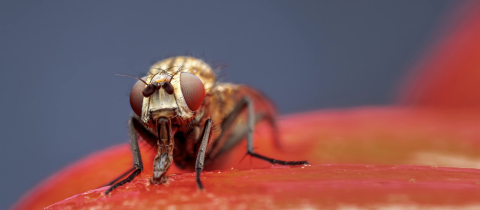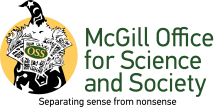This article was first published in The Montreal Gazette.
Finding the likes of Benjamin Franklin and Leonardo da Vinci on a list of polymaths was no surprise. A polymath is a person who knows a lot about many different subjects and in most cases has made a lasting contribution in at least one of their fields of interest. Franklin was a writer, scientist, inventor, statesman, diplomat, printer and political philosopher, while da Vinci, besides being a painter, had interests in engineering, architecture, sculpting, anatomy, botany and astronomy.
My surprise came when I did not find the name of Charles Richet among the many polymaths listed. I would like to make a case for this French physician, who was the recipient of the 1913 Nobel Prize in Physiology or Medicine. Richet wrote plays and poetry, published articles on hypnosis, anorexia nervosa, the body’s thermoregulation, psychology, pacifism and paranormal phenomena. He even built an airplane.
In 1901, Emil von Behring was awarded the Nobel Prize for his discovery that serum prepared from the blood of a horse infected with diphtheria bacteria could be used to treat diphtheria in humans. A decade earlier, Richet had shown that rabbits inoculated with blood from dogs that had recovered after being exposed to a specific bacterium were protected from subsequent infection by that bacterium. This was “serotherapy” that predated von Behring’s discovery.
Two terms coined by Richet — “anaphylaxis” and “ectoplasm” — could be said to define his career. Anaphylaxis, derived from the Greek for “contrary to protection,” refers to a potentially life-threatening allergic reaction characterized by a sudden drop in blood pressure and constriction of the airway first described in 1901 by Richet.
A commemorative stamp was issued by the Principality of Monaco on the 50th anniversary of the discovery, depicting a jellyfish-like Portuguese man o’war, the yacht Hirondelle II, and images of Prince Albert of Monaco, Paul Portier and Richet.

Prince Albert Grimaldi had a passion for oceanography and marine biology. In 1885, he had initiated a series of cruises with guest scientists who would perform experiments aboard the Hirondelle II, which had been equipped with laboratories. In 1901, Portier and Richet, both of whom had an interest in poisons, were tasked with studying the mechanism by which the Portuguese man o’war stuns prey and causes severe pain in humans stung by its tentacles. The goal was to characterize the toxin with hope of developing some sort of antidote.
Portier and Richet isolated “hypnotoxin,” named from the Greek word for “sleep,” since it put ducks and guinea pigs to sleep permanently. Once they returned to land, the researchers had no access to the man o’war, but were able to avail themselves of Actinia sulcata, a sea anemone that produces a similar toxin. Following in French microbiologist Louis Pasteur’s footsteps, they investigated whether animals could develop immunity to “actinotoxin” through repeated injections of increasing amounts. Their trial with dogs proved to be astonishing. Some of the dogs had a fatal reaction to a tiny dose of the toxin; it was harmless to others.
It turned out that these animals had been previously used to study the toxicity of actinotoxin and had completely recovered from the experience. Now they had a lethal reaction to what should have been a harmless dose. Somehow they had been exquisitely sensitized. In a followup experiment, two dogs were treated with a small dose of the toxin that produced no effect, and then 27 days later were given a tiny dose that should have had no effect at all but produced vomiting, tremors and death.
Richet concluded that “administration of a substance insufficient to kill or even sicken a normal animal can produce fulminating symptoms and death in an animal previously inoculated with the same substance.” Exposure to a small dose did not produce immunity as might be expected. This was “contrary to protection,” it was anaphylaxis.
Portier did not pursue any further studies of the phenomenon, but Richet went on to show that only some animals experience anaphylaxis and proposed that this was due to some sort of biochemical individuality that causes particular sensitivity. He also demonstrated that dogs that recovered from an anaphylactic reaction became immune to a subsequent dose. To provoke anaphylaxis, initial exposure is required, which may come even from skin contact, but why some people react in an extreme fashion to subsequent exposure is not clear. Genetics are involved and environmental factors that disturb the population of bacteria in the gut may also play a role.
Now on to “ectoplasm,” a term coined by Richet in 1894 to describe a viscous substance that supposedly exudes from a spirit medium during a trance. He did not believe this had anything to do with spirits, but thought it was an external manifestation of some sort of power that allows psychics to produce such phenomena as reading thoughts, moving objects without touching them (psychokinesis), and describing what is being seen by a person at some location unknown to the medium (remote viewing). Richet believed that such things are possible and searched for a scientific explanation. He attended a number of séances and concluded that while some mediums resorted to trickery, others were genuine and produced effects that could not be explained by science.
It is curious that an accomplished scientist could be taken in by fake psychics. The term “fake” is probably redundant here, since there is no evidence that anyone has ever demonstrated psychic abilities under properly controlled conditions. Richet believed that famed Italian spiritualist medium Eusapia Palladino could truly levitate tables and teleport objects, despite having been repeatedly exposed by magicians. He was convinced that he saw French medium Marthe Beraud produce ectoplasm. When she was exposed as a fraud and the ectoplasm was shown to be made of paper and gauze, Richet’s interpretation was that sometimes she resorted to trickery because she could not always produce the effects that the sitters at a séance expected.
The discoverer of anaphylaxis likely believed that, as a scientist who had been trained to rely on observation, he could not be fooled by uneducated mediums. He was wrong. If one is unfamiliar with the apparatus, the sleight-of-hand tricks and methods used by magicians to perform feats that seem to oppose the laws of nature, it is very easy to be taken in.
Charles Richet’s scientific accomplishments outshine his curious incursion into what he called “metapsychics.” However, his foray into eugenics, favouring limiting procreation by the deformed and intellectually challenged, leaves a stain on his career. Nevertheless, Richet’s Nobel Prize for the discovery of anaphylaxis along with his many interests should earn him a spot on any list of polymaths.







